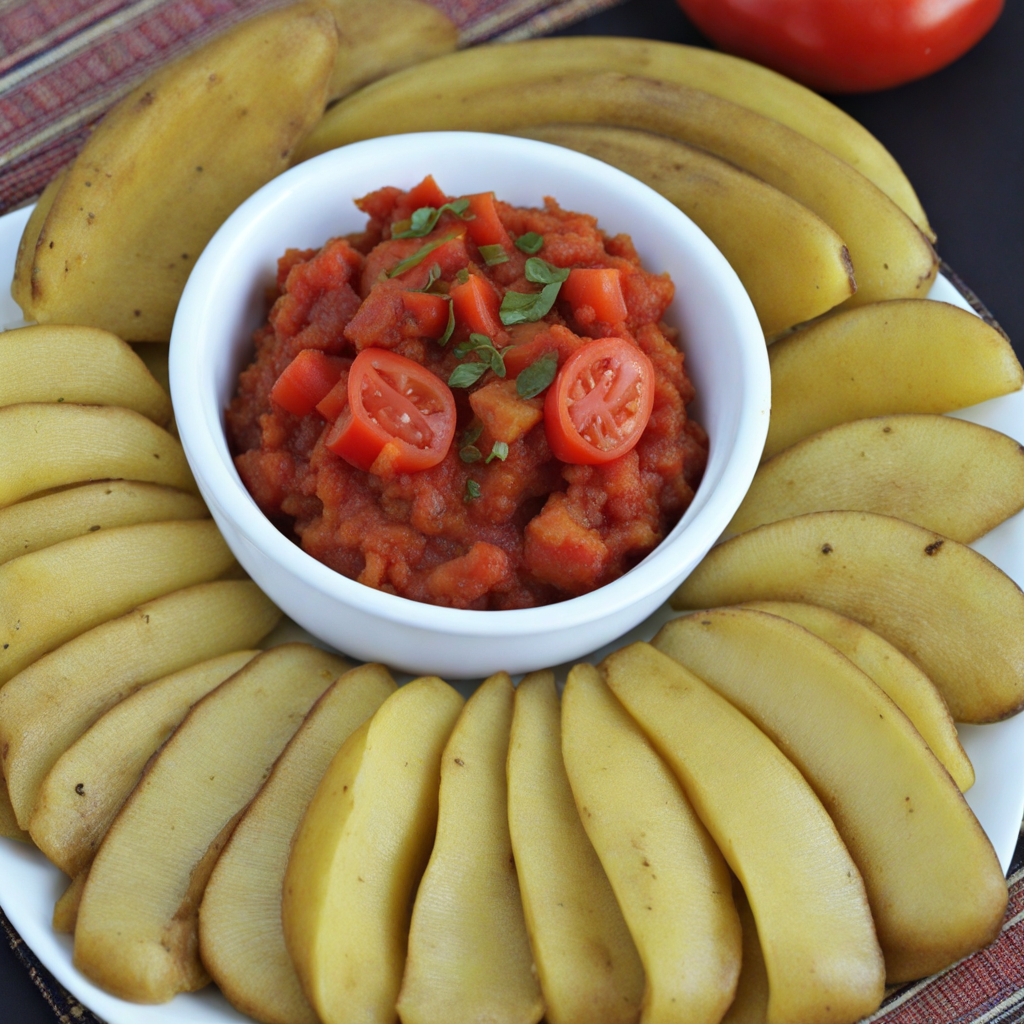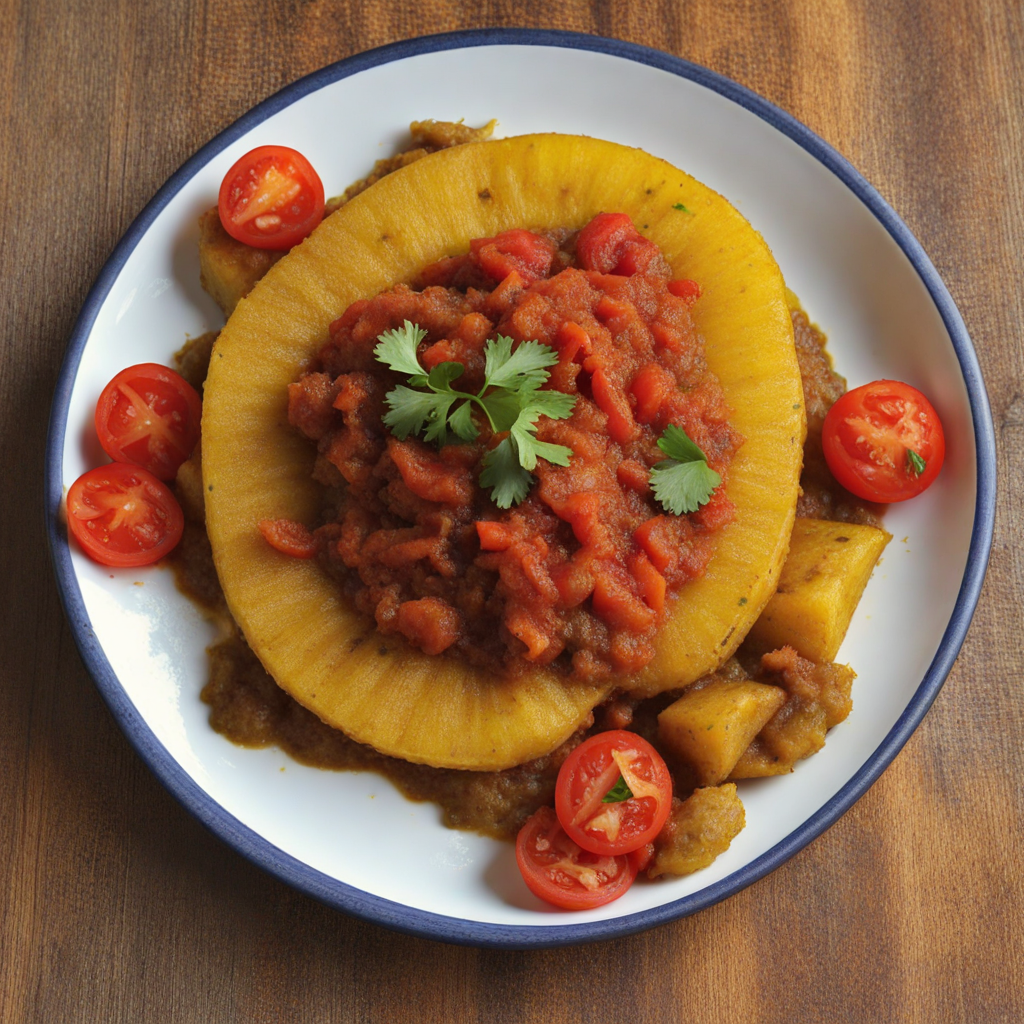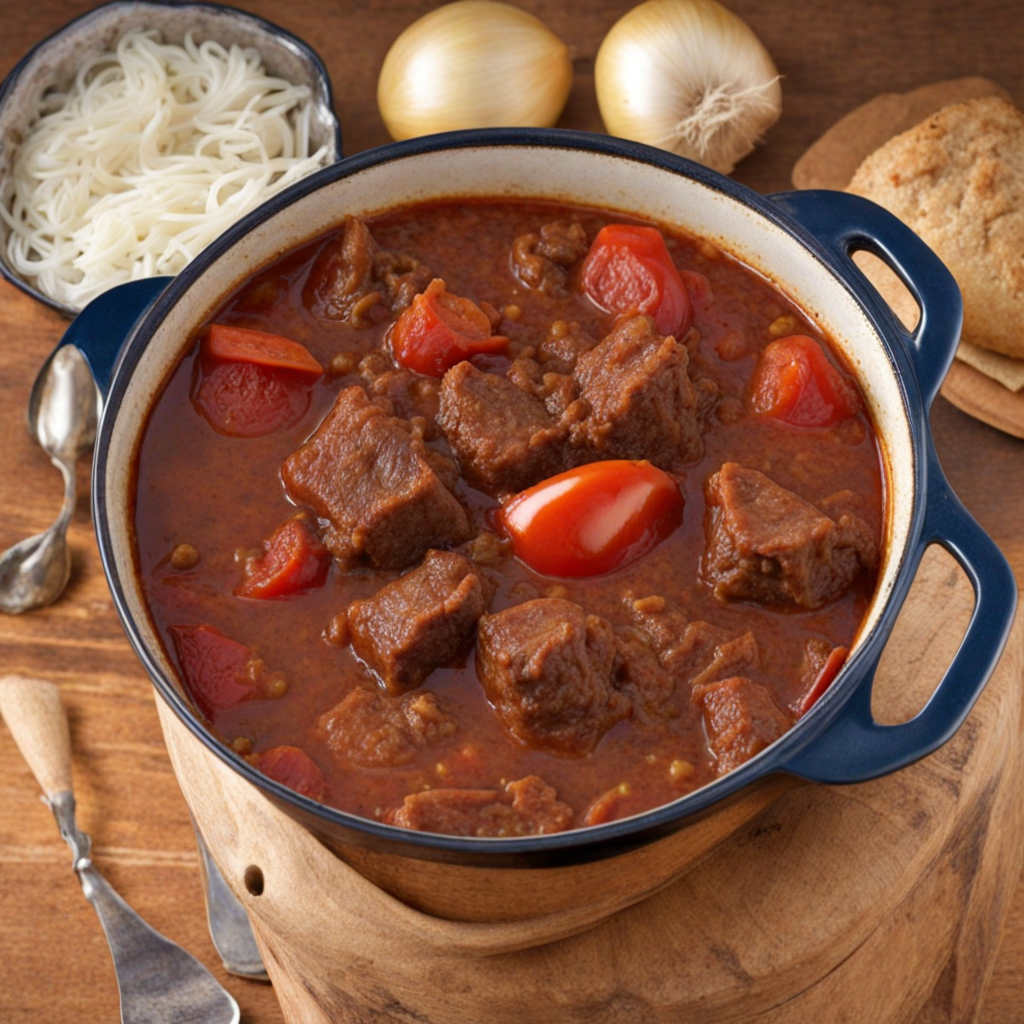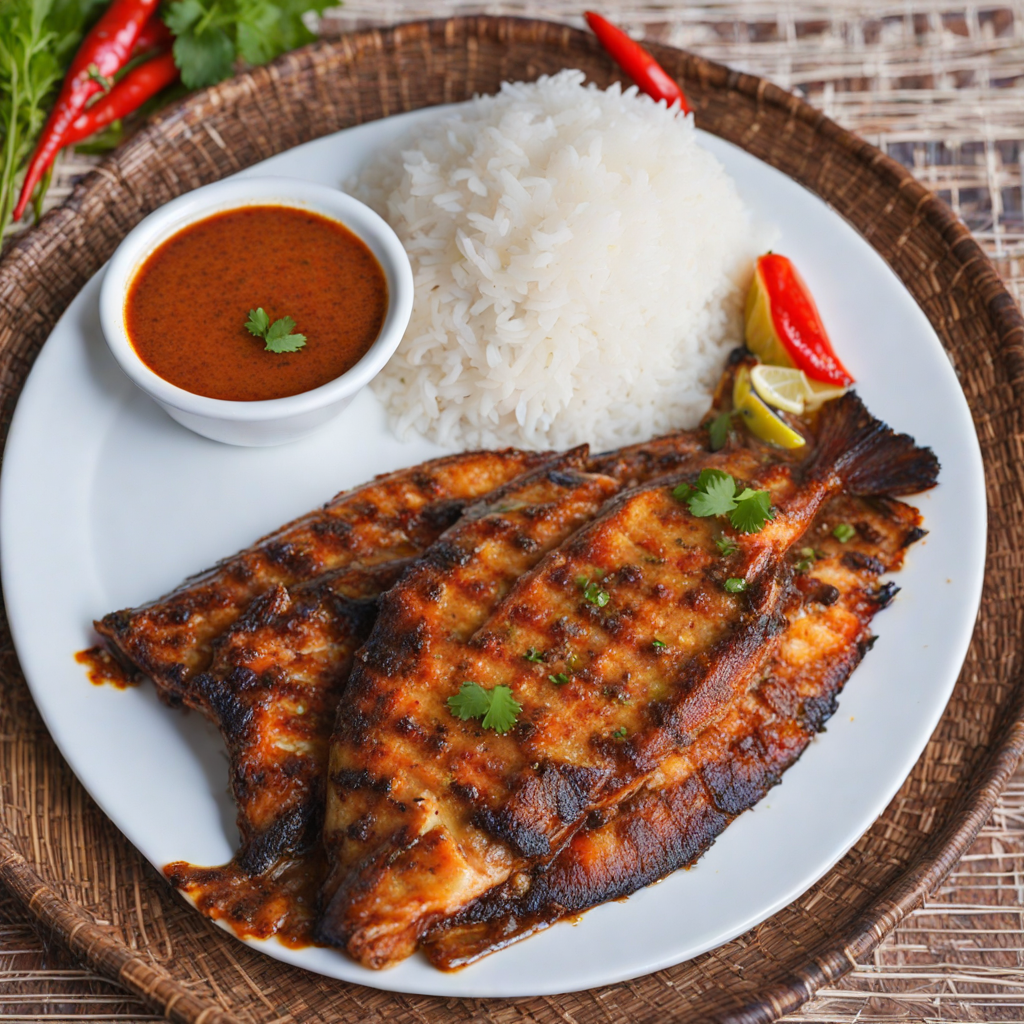Matoke
Matoke, also known as East African highland bananas, is a staple food primarily found in Kenya and other parts of East Africa. This unique dish is made from unripe green bananas that are steamed or boiled and then mashed or served whole. The flavor of matoke is subtly sweet and mild, offering a comforting and hearty base that pairs wonderfully with various sauces and stews. Its texture is soft and creamy, making it an excellent canvas for absorbing flavors from accompanying dishes, such as rich meat stews or spicy vegetable sauces. The preparation of matoke is often a communal affair, reflecting the cultural significance of this dish in Kenyan cuisine. Traditionally, the bananas are peeled, wrapped in banana leaves, and steamed over an open fire, infusing them with a distinct aroma that enhances the overall experience. Matoke is frequently served as a side dish alongside staples like ugali and sukuma wiki, or it can be enjoyed as a main dish when prepared with flavorful accompaniments. This method of cooking emphasizes the natural sweetness of the bananas while maintaining their nutritional value, making them a wholesome addition to any meal. Matoke is not just about taste; it's also about tradition and community. In many Kenyan households, the process of peeling and preparing matoke brings families together, creating a sense of unity and shared experience. Its versatility allows for various adaptations, from simple seasoning with salt and butter to more elaborate preparations with spices and meats. As you explore matoke, you’ll discover a dish that embodies the heart of Kenyan cuisine, rich in flavor and history, inviting you to savor its delightful simplicity.
How It Became This Dish
Origin of Matoke Matoke, also known as green bananas or cooking bananas, has its roots in the highland regions of East Africa, particularly in countries like Kenya and Uganda. It is believed that the cultivation of matoke began in the region around 500 AD, following the migration of the Bantu-speaking people who brought with them the knowledge of banana farming. The plant itself, Musa spp., thrived in the fertile volcanic soils of the East African highlands, which provided an ideal environment for its growth. Over time, matoke became a staple food for many communities, particularly among the Baganda in Uganda and the Kikuyu in Kenya. As matoke spread throughout the region, it adapted to various climatic conditions, leading to the development of different varieties. The banana plant is not only valued for its fruit but also for its leaves and fibers, which have been used traditionally in cooking, crafts, and construction. The versatility of matoke has made it an integral part of African agricultural practices and local economies, especially in rural areas where it serves as a primary food source. \n\n Cultural Significance In Kenya, matoke holds a significant place in the cultural and culinary landscape. It is much more than a mere food item; it symbolizes hospitality and community. When preparing matoke, it is customary to cook it in a communal setting, often as part of larger gatherings or celebrations. The cooking process involves steaming the bananas in a pot or wrapping them in banana leaves, a method that enhances their flavor and preserves their nutritional value. Matoke is often served during special occasions such as weddings, funerals, and other significant ceremonies. In these contexts, it represents abundance and is associated with fertility and prosperity. The act of sharing matoke among family and friends strengthens social bonds and reinforces cultural values. Furthermore, matoke is frequently accompanied by various traditional dishes, such as stews made from meat, vegetables, or legumes, showcasing the rich culinary heritage of the region. \n\n Development Over Time The cultivation and consumption of matoke have evolved significantly over the centuries. With the advent of colonialism in the late 19th and early 20th centuries, agricultural practices underwent considerable changes. European settlers introduced new farming techniques and crops, leading to a shift in local agricultural priorities. However, matoke remained a staple food for many communities, adapting to the changing socio-economic conditions. In the post-colonial era, matoke continued to be vital for food security in Kenya. The government recognized its importance and invested in agricultural research and development to improve banana cultivation techniques. Initiatives aimed at increasing yields and promoting sustainable farming practices have contributed to the resilience of matoke production. Farmers also began to explore value-added processes, such as drying and packaging matoke for sale in urban markets, thus expanding its reach beyond rural areas. \n\n Modern Consumption and Globalization In recent years, matoke has gained recognition beyond East Africa, thanks in part to globalization and the diaspora of East Africans around the world. As communities migrated to urban centers and different countries, they brought their culinary traditions with them, introducing matoke to new audiences. The increasing interest in ethnic foods has led to the appearance of matoke in restaurants and grocery stores outside of Africa, where it is sometimes marketed as a health food due to its high fiber content and nutritional benefits. Moreover, the rise of social media and food blogging has facilitated the sharing of matoke recipes and cooking methods, further popularizing the dish. Contemporary chefs have also experimented with matoke, incorporating it into fusion cuisine that blends traditional flavors with modern culinary techniques. This evolution reflects a broader trend in which traditional foods are reimagined and celebrated in new contexts, allowing matoke to remain relevant in the global culinary scene. \n\n Nutritional Value and Culinary Uses Matoke is not only culturally significant but is also a nutritional powerhouse. It is rich in carbohydrates, vitamins, and minerals, making it an essential part of a balanced diet. The bananas are typically harvested when still green and should be cooked before consumption. They can be boiled, steamed, or mashed, with the texture resembling that of potatoes when prepared. This versatility makes matoke suitable for a variety of dishes, from savory stews to sweet desserts. In addition to traditional preparation methods, contemporary cooks have begun to experiment with matoke in various culinary applications. It can be used to make flour for baking, incorporated into smoothies, or even fried as a crunchy snack. The ability of matoke to absorb flavors makes it an excellent base for curries and sauces, allowing it to blend seamlessly with spices and other ingredients. \n\n Challenges and Future Prospects Despite its rich history and cultural significance, matoke faces challenges that threaten its production and consumption. Climate change poses a significant risk to banana farming, with increasing temperatures, erratic rainfall, and the spread of pests and diseases impacting yields. Farmers must adapt to these challenges through sustainable practices and diversification of crops to ensure food security. Furthermore, the increased demand for matoke in urban centers and international markets has led to concerns about overreliance on monoculture farming, which can diminish biodiversity and soil health. To address these issues, agricultural organizations and governments are promoting sustainable farming practices that prioritize soil conservation, pest management, and crop rotation. As matoke continues to gain popularity both locally and internationally, there is potential for its cultivation to expand, offering economic opportunities for farmers and communities. By embracing modern agricultural practices while respecting traditional knowledge, matoke can thrive in a rapidly changing world, ensuring that this cherished food remains an integral part of East African culture for generations to come.
You may like
Discover local flavors from Kenya







